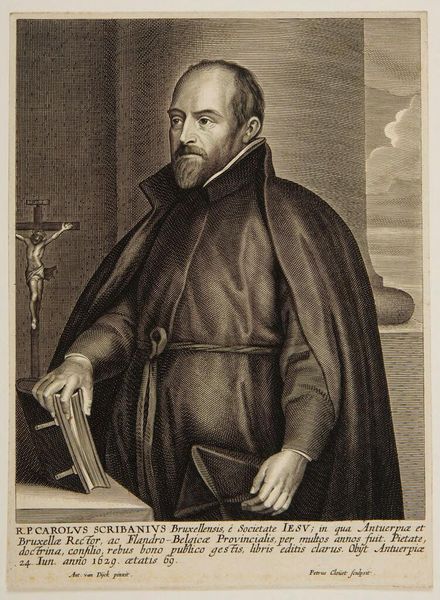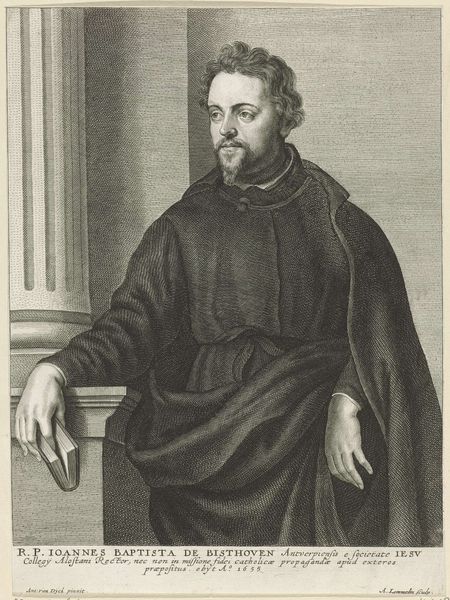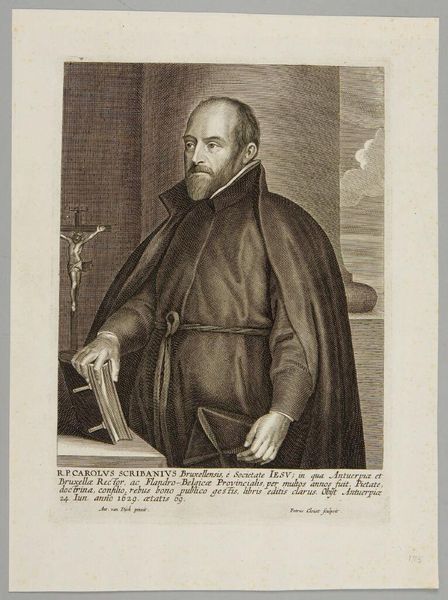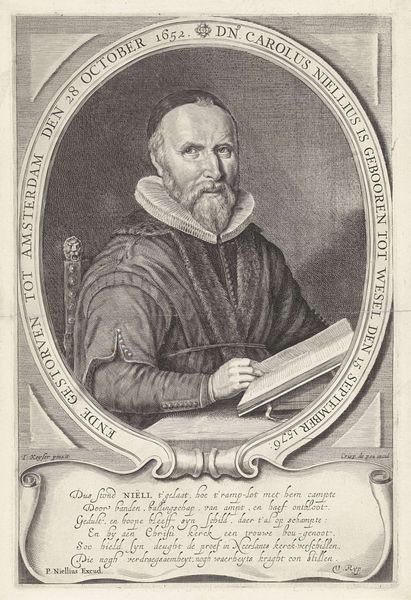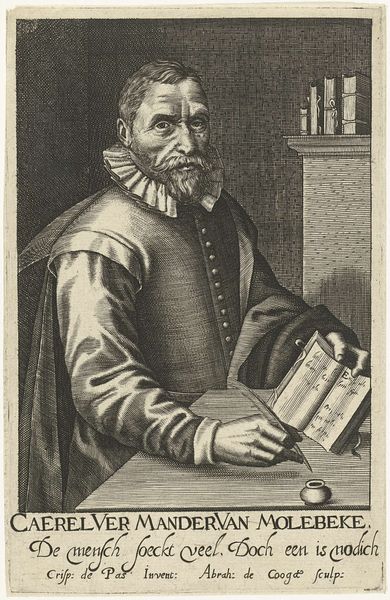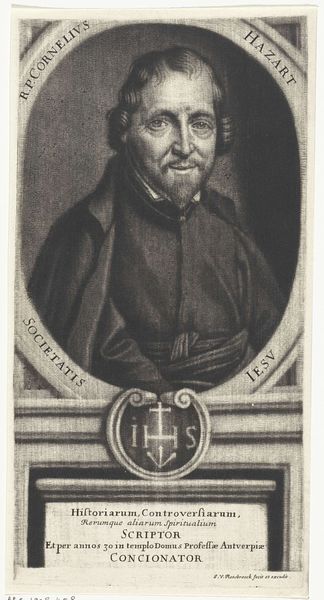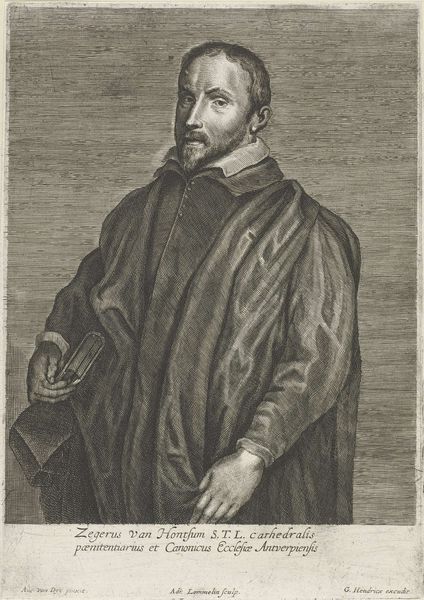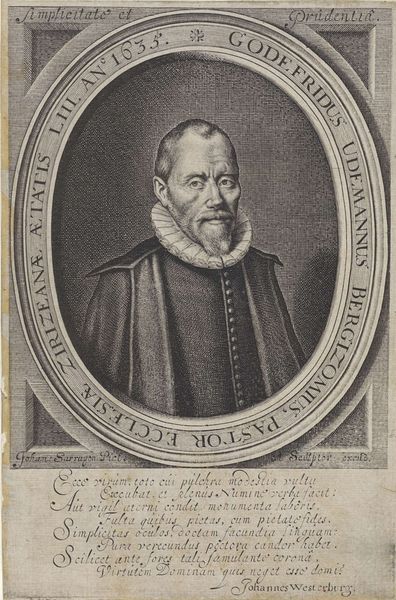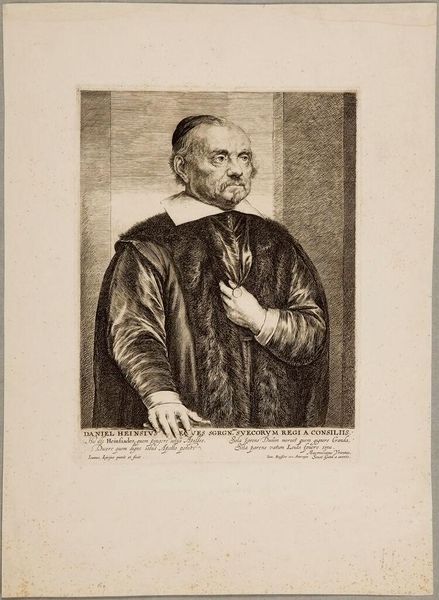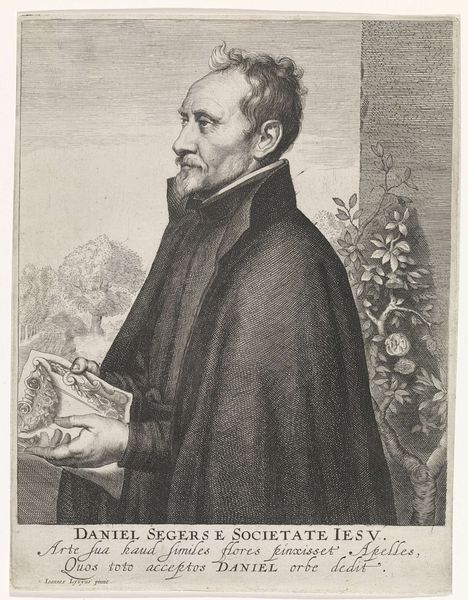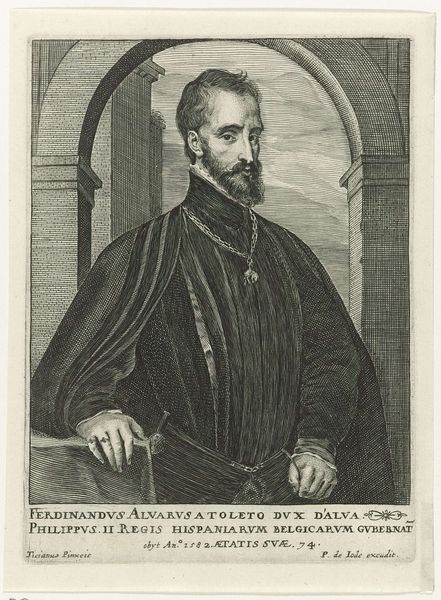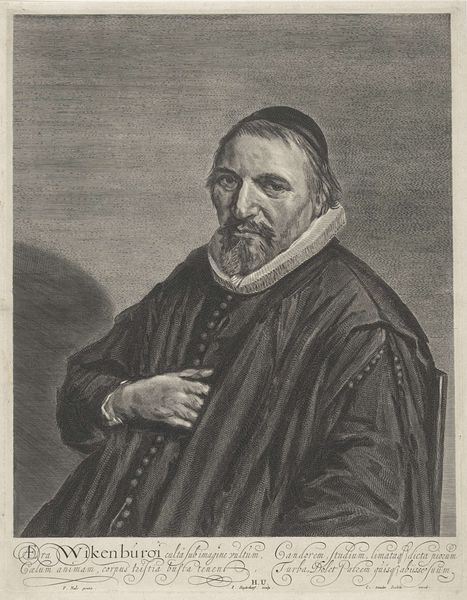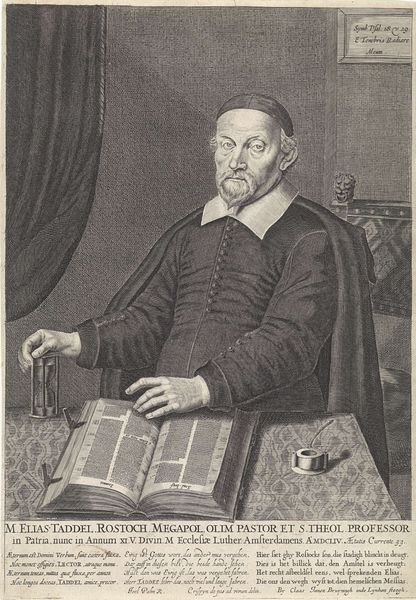
engraving
#
portrait
#
baroque
#
portrait image
#
history-painting
#
engraving
#
portrait art
Dimensions: height 267 mm, width 195 mm
Copyright: Rijks Museum: Open Domain
Curator: This is a portrait of Carolus Scribani, created between 1639 and 1670 by Petrus Clouwet. The work is an engraving, a testament to the meticulous craftsmanship of the Baroque era. Editor: My first impression? Somber. The dark cloak and the cross in the background set a very serious tone. The man has such intense, penetrating eyes. Curator: It's important to remember the Counter-Reformation context. Scribani was a Jesuit, and the symbols underscore his commitment to religious doctrine amid the rising tides of new philosophies in the 17th century. His direct gaze asserts institutional power and presence. Editor: Absolutely. The crucifix is not just a background element; it speaks to martyrdom, sacrifice, and unwavering faith. Even his slightly parted lips and fixed stare can read as him bearing witness and serving as an intermediary. Notice how his hand is positioned upon the book as if it’s a cornerstone to which he clings. Curator: And the way Clouwet has captured the texture of his garments speaks to an attempt at visual representation of the societal hierarchies, particularly when we analyze dress codes and access to scholarly education. The engraving emphasizes material differences—wealth, intellectual status. The portrait isn't just about Scribani; it’s also about the social fabric of the period. Editor: There's also the composition—the balance between text, the figure, and the background icons. It makes me think about visual storytelling as a mnemonic device—each element reinforces Scribani's identity and the Jesuit order he represented. Curator: Precisely. Portraits during this time played a key role in constructing a sense of identity, influence, and belonging. Analyzing what the work conveys tells us about the prevailing structures and norms against which one could measure their position and selfhood. Editor: I'm struck again by those eyes—the light seems to catch them perfectly, lending an almost divine quality. What better way to illustrate how image can capture character and stand the test of time? Curator: Ultimately, examining this artwork provides insight into not only Scribani's identity, but also into the era’s power dynamics, ideologies, and visual culture. Editor: A compelling reminder that images are never just what they seem. Thanks for sharing your wisdom.
Comments
No comments
Be the first to comment and join the conversation on the ultimate creative platform.
